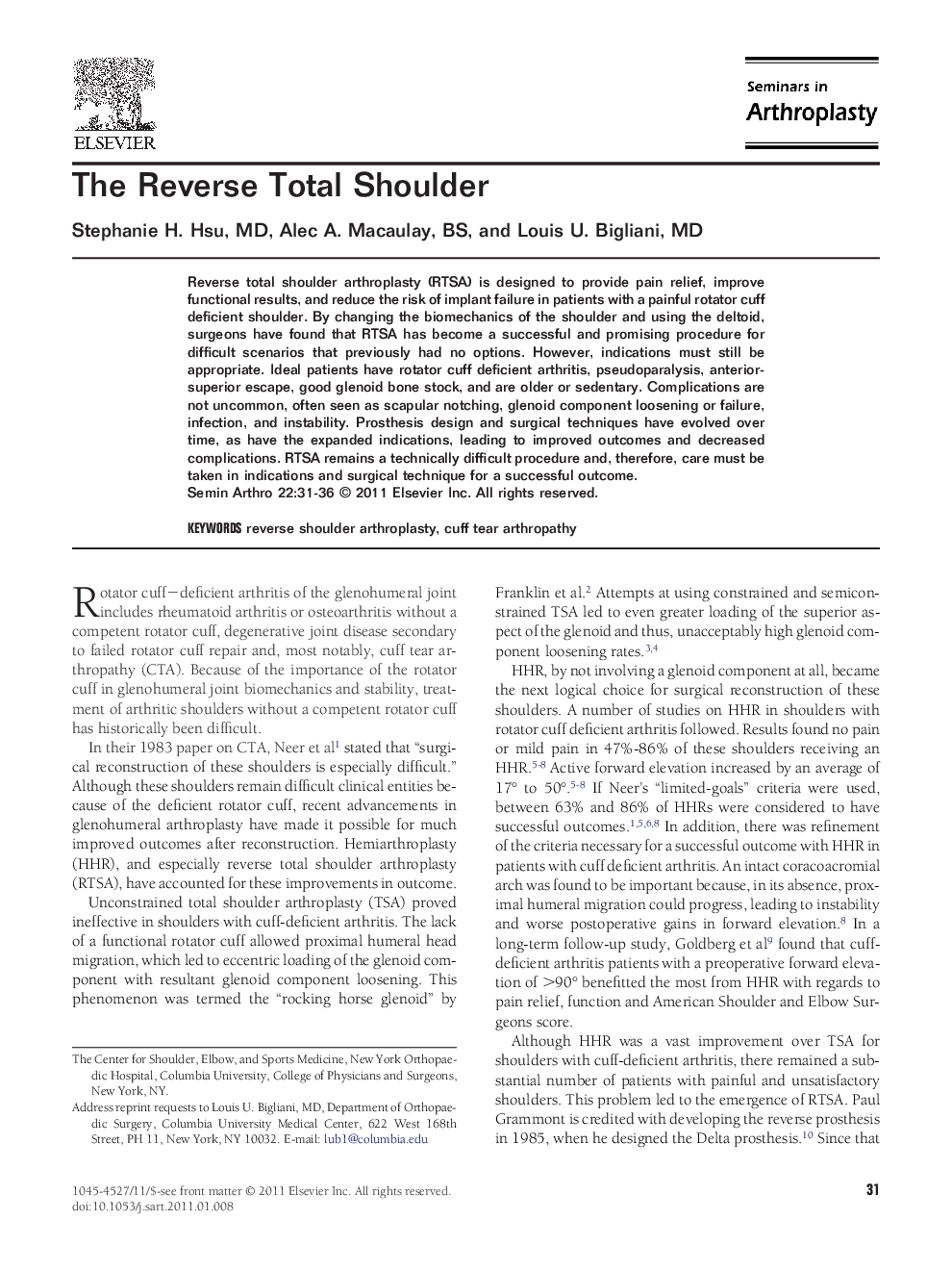| Article ID | Journal | Published Year | Pages | File Type |
|---|---|---|---|---|
| 4094177 | Seminars in Arthroplasty | 2011 | 6 Pages |
Reverse total shoulder arthroplasty (RTSA) is designed to provide pain relief, improve functional results, and reduce the risk of implant failure in patients with a painful rotator cuff deficient shoulder. By changing the biomechanics of the shoulder and using the deltoid, surgeons have found that RTSA has become a successful and promising procedure for difficult scenarios that previously had no options. However, indications must still be appropriate. Ideal patients have rotator cuff deficient arthritis, pseudoparalysis, anterior-superior escape, good glenoid bone stock, and are older or sedentary. Complications are not uncommon, often seen as scapular notching, glenoid component loosening or failure, infection, and instability. Prosthesis design and surgical techniques have evolved over time, as have the expanded indications, leading to improved outcomes and decreased complications. RTSA remains a technically difficult procedure and, therefore, care must be taken in indications and surgical technique for a successful outcome.
